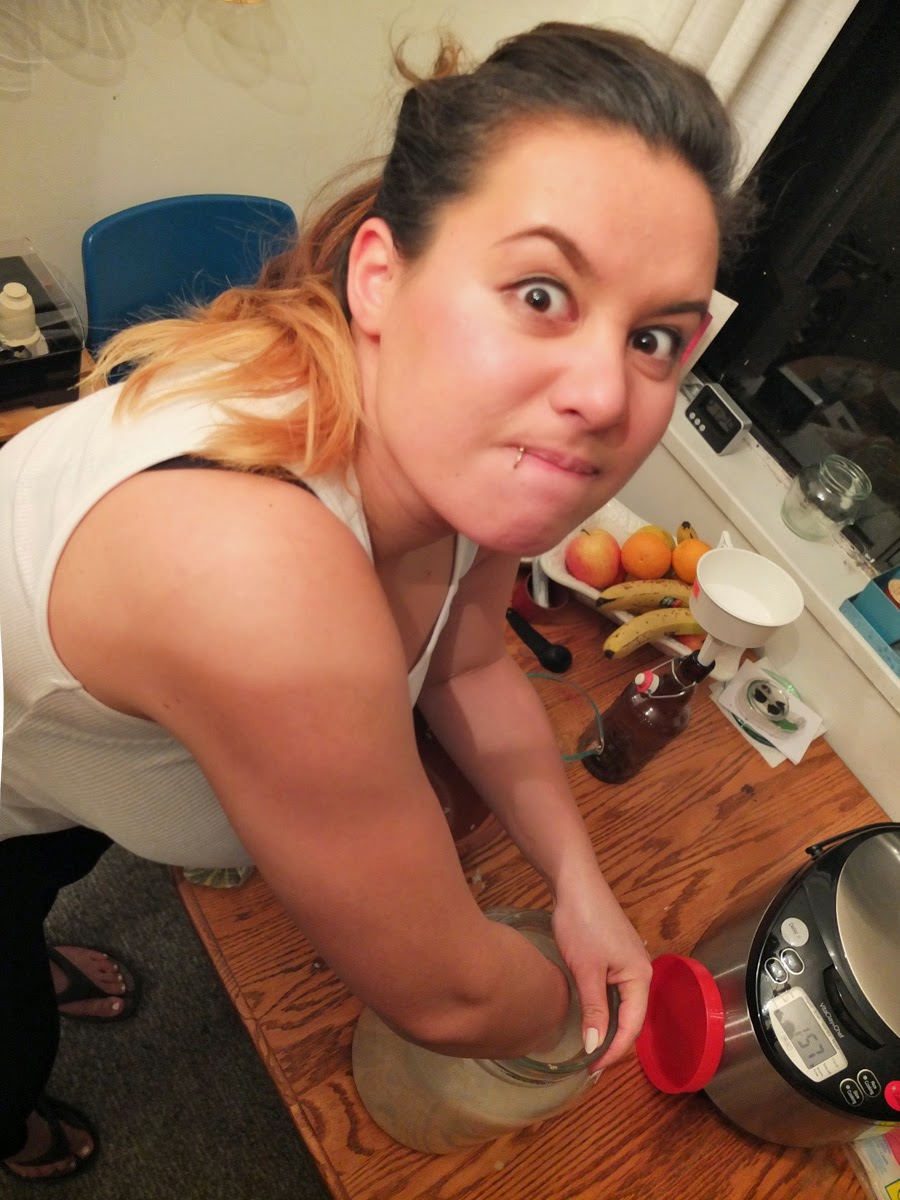I comment a lot about how I never post regularly, and I usually take on an unnecessarily apologetic tone when I do it. Well, nuts to that. I feel entirely justified about not posting since July because I do loads of shit all summer long. But finally, FINALLY something I did just so happened to intersect with something that I've wanted to post for a while: my go-to rabbit recipe.
Summer was capped off with a road trip towards northwest BC. The people I met up there were so goddamned cool and welcoming, nobody more so than our hosts. Fortunately/unfortunately for them, I showed my gratitude by bringing a couple of dead rabbits with me.
In an effort to avoid coming off as a weird, morbid asshole, I cooked them, too.

Rabbit Braised in Wine Schloob
- 2 carrots
- 2 onions
- 2 stalks celery
- 1 head of garlic
- 12 pitted prunes
- 3 inch sprig rosemary
- 2 sprigs sage (roughly 10 leaves)
- 3 whole star anise
- 1 cup chicken stock
- 1 bottle of dry red wine (no need to get fancy)
- 1-2 tbsp flour
- salt+pepper
- fat/oil/whatever
- fat/oil/whatever
Step one: acquire a rabbit.
Step two: butcher said rabbit into manageable pieces. A little Google-fu will clear up any questions you have about how to do it.
Chop up the veg, bundle the herbs together, and cut the prunes in half. I don't bother with mincing up the garlic (smash and peel suffices for the long cooking time), but hey — you do you. Set it all aside and get down to business.
Liberally season the rabbit on both sides with salt and pepper. Set a pan with a couple tablespoons of fat over high heat and brown each piece on both sides. Stick the meat somewhere to hang out and grab your chopped veg.
Turn the heat down a bit and toss the veg into the pan. Stir and cook until the onions start going translucent.
Tasty brown bits are probably already coming off the bottom at this point, but further deglaze the pan with the wine. Feel free to then throw in the prunes, herb bundle, anise, and chicken stock. I also usually add in about a teaspoon of salt and roughly a dozen whole peppercorns at this point — you can add in however much or little as you like.
Cover the pan and transfer to the oven for about 2 hours (or until your rabbit is tender).
This next step is entirely optional — I like a thicker sauce, but if you like runnier stuff then just dig in as is.
Remove the anise bits and herb bundle from the pan. Mix 2 tbsp of flour in about 1/3 cup of water and gradually add into the hot pan while stirring until the desired thickness is reached. I usually end up using about 3/4 of the slurry, but it all depends on how much liquid remains in your pan after roasting. Place the meat back into the sauce, and you're good to go.
Eat with your sauce vehicle of choice, and remember: the cuter it is, the better it tastes.







































































